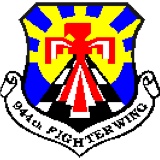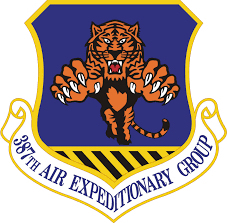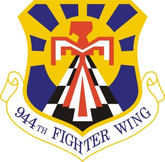Information
-
Document No.
-
Audit Title
-
unit
-
Client / Site
-
Conducted on
-
Prepared by
-
Location
-
Personnel
POLICY and LEADERSHIP (Pillar 1)
-
1. Management & Supervisory Support for Safety
-
1.1 SAFETY POLICY AND GOALS
-
- Has the organization established mishap prevention goals, objectives and milestones? Please define.
-
- How has leadership communicated established policies and results-orientated goals and objectives for employee safety to employees?
-
- Do employees understand the goals and objectives for the safety and health program? Please explain.
-
1.2 LEADERSHIP ENGAGEMENT
-
- How are managers, supervisors and employees held accountable for meeting their responsibilities for workplace safety and health?
-
- Are there adequate resources (equipment, experts, budget etc.) dedicated to ensuring workplace safety and health? provide examples.
-
- Has the Commander been briefed on safety matters quarterly by the USR?
-
1.3 AIRMAN PARTICIPATION
-
- Has the organization established and implemented processes to ensure effective participation in the mishap prevention program by its Airman at all levels? provide examples.
RISK MANAGEMENT (RM) ( Pillar 2)
-
- Is risk management, integrating hazard reduction and safety policy into on and off duty operations and activities, evident in the organization? Provide examples.
-
- Is the unit inspected incorporating risk management into day to day mission planning and execution? Please explain
-
- Provide a summary indicating what JSA's are being used in the work enter and any RM processes documented on the AF Form 4437, Deliberate Risk Assessment Worksheet or equivalent?
-
- When purchasing new materials or equipment, or implementing new processes, what types of analysis are performed to determine their impact on safety and health? Is it adequate?
-
- When implementing/introducing non-routine tasks, materials or equipment, or modifying processes, what types of analyses are performed to determine their impact on safety and health? Is it adequate?
-
- Are Commanders and Supervisors trained in AF RM Fundamentals and other RM courses as appropriate and IAW AFI 90-802?
-
- Have Commanders and Supervisors ensured all personnel have been trained on AF RM Fundamentals?
ASSURANCE (Pillar 3)
-
3.1 MISHAP and NEAR MISS EXPERIENCE and TRENDS
-
- Are unit personnel aware of mishap and near miss reporting requirements?
-
- Did the organization take prompt action to address mishap findings and recommendations?
-
- Is the data from hazard reports or mishap investigations used to determine the potential for injuries and illnesses? Describe trend analysis, share there any discernible trends?
-
3.2 COMPLIANCE WITH SAFETY PROGRAM DIRECTIVES
-
- Have all findings/deficiencies from previous inspections/assessments been closed?
-
- Is the organization doing self assessments and uploading the required information into MICT?
-
- Does the USR conduct and document monthly spot inspections and follow up every 30 days for open discrepancies?
-
- Are there any open RAC's from identified findings or hazards? List items being tracked on the MHAP and status.
-
- Are supervisors conducting work center inspections and following up every 30 days for open discrepancies?
-
- Is there a minimally effective means for employees to report hazards and have them addressed?
-
- Have there been any hazards reported? We're the hazards mitigated or eliminated immediately?
-
3.2.1. PERSONAL PROTECTIVE EQUIPMENT (PPE)
-
Does the work center require PPE to perform tasks?
-
- Has the PPE been assessed and documented for all job tasks requiring its use?
-
- Are specific requirements from BIO Survey briefed?
-
- Are personnel aware of, and are they using proper PPE?
-
- Is PPE readily available, properly maintained and serviceable?
-
- Are individuals trained and are lesson plans adequate, used and available on PPE use, location, fit, care and limitations?
-
- Do lesson plans adequately cover the requirements of the PPE in the work center?
-
- Are assigned personnel receiving recurring medical examinations based on exposures in the work center? (E.g. Hearing conservation, blood work for fuel cell personnel, respiratory fit test)
-
3.2.2. HAZARDOUS ENERGY CONTROL (LOCKOUT/TAGOUT)
-
Is the work center exposed to hazardous energy control requirements?
-
- Has the supervisor identified all equipment in the work center requiring hazardous energy control?
-
- Are individuals trained and are lesson plans with step by step procedures adequate, used and available for each piece of equipment requiring LOTO?
-
- Are tags being kept for one year after removal and do they match the log?
-
- Are annual inspections accomplished?
-
- Are authorized personnel being evaluated?
-
- Does AFTO Form 244 match LOTO tag?
-
3.2.3. HAZARD COMMUNICATION
-
Does the work center have hazardous chemicals requiring a HAZCOM program?
-
- Are individuals trained and are lesson plans used and available to cover all hazardous material?
-
- Is Hazardous material properly labeled?
-
- Can shop personnel find information on Safety Data Sheets (SDS)?
-
3.2.4. CONFINED SPACE PROGRAM
-
Does the work center have requirements to enter confined spaces?
-
- Has the work center developed a Master Entry Control Plan (MEP) for recurring confined space entries?
-
- Have all required elements of the MEP been reviewed by the CSPT and meet applicable requirements?
-
- Are individuals trained and are lesson plans used and available for Entrant, Attendent, Supervisor, Monitor and Rescue Team?
-
- Do personnel performing tasks in confined spaces show adequate knowledge to ensure safe operations?
-
- Are the AF Form 1024, Confined Space Entry Permit, kept on file for one year?
-
- Are extraction exercises being performed?
-
- Is the emergency response plan adequate?
-
3.2.5. MANUAL AND POWERED HOIST
-
Does the work center have requirements to use manual and/or powered hoist?
-
- Are individuals trained and are lesson plans avalable?
-
- Is documentation of Inspections maintained? (Chains, hooks, etc)
-
- Are slings/Chains marked properly? (Load rating, manufacturers info, etc)
-
3.2.6. RESPIRATORY PROTECTION PROGRAM
-
Does the work center have requirements to use respiratory protection?
-
Is the work center under respiratory program?
-
- Is training and proper use and care adequate?
-
- Are personnel being Fit tested?
-
- Are respirators being stored properly?
-
3.2.7. VEHICLE MOUNTED ELEVATED WORK PLATFORMS, SELF PROPELLED AND MANUAL PLATFORMS
-
Does the work center have requirements to use vehicle mounted elevated work platforms, self propelled and manual platforms?
-
- Are individuals trained and are lesson plans used and available?
-
- Are fall protections requirements being adhered to?
-
- Is scheduled maintenance being performed and documented?
-
- Are manufacturers instructions on-hand?
-
3.2.8. FALL ARREST SYSTEM(S)
-
Does the work center have requirements to work at height?
-
- Are work center personnel aware of and are they using applicable Job Safety Analysis?
-
- Has Safety and applicable CC reviewed and approved?
-
- Are supervisors inspecting equipment and documenting the inspection quarterly?
-
- Is the competent person designated in writing?
-
- Are individuals trained and are lesson plans used and available?
-
- Are workers able to know the difference of the different types of system being used (fall arrest, positioning, restraint, etc?)
-
- Are workers inspection equipment prior to use?
-
- Are rescue plans adequate, available and exercised?
-
3.2.9. FORKLIFT (MATERIAL HANDLING EQUIPMENT)
-
Does the work center have requirements to use forklifts?
-
- Are individuals trained and are lesson plans adequate, used and available?
-
- Are pre-use inspections being performed and documented?
-
- Are forklift drivers re-certified every 3 years?
-
3.2.10. PORTABLE and FIXED LADDER SAFETY
-
Does the work center have requirements to use portable or fixed ladders?
-
- Are individuals trained and are lesson plans used and available?
-
- Are ladders in a serviceable condition and stored properly?
-
3.2.11. MOTORCYCLE UNIT SAFETY TRACKING TOOL (MUSTT)
-
- Is MUSTT data up to date for the organization being assessed?
-
3.3 PROVIDE ANY PROGRAM DEFICIENCIES OR POLICY SHORTFALLS AND REFERENCES
-
- Identify potential hazards and confirm risks found during inspection/assessments.
-
- Did the organization meet its established mishap prevention goals, objectives and milestones?
-
3.4. PROVIDE RECOMMENDATIONS FOR IMPROVEMENTS/COMPLIANCE
-
- Evaluate inspection results and provide leadership recommendations for improvement/compliance.
-
- Provide a measurement of the effectiveness of the units AFSMS.
PROMOTION, TRAINING and EDUCATION (Pillar 4)
-
- Do AF personnel (military, civilian) and advisory and assistance services contractors know the mishap prevention program requirements that apply to their daily duties?
-
- Do personnel understand AFSMS practices regarding possible hazard identifications, control and reporting procedures?
-
- Do personnel understand where and how they can practically participate in the AFSMS?
-
- Do employees feel free to participate in the AFSMS without fear of discrimination or reprisal? Please explain.
-
- Has the installation developed, implemented and integrated safety guidelines and standards into existing local level training programs?
-
- Are safety briefings and educational safety material provided to shop personnel?
-
- Are employees up to date on all safety training applicable to their duty section? (E.G. Supervisor Safety Training, JSTO, USR, Confined Space, Fall Protection, Lock Out Tag Out, HAZCOM, Forklifts, Aerial Lifts, Cranes, Hooks/Slings, etc)
-
- Have all personnel assigned received the required Traffic Safety Training? (E.G. Course II, Local Conditions Course, Course III, Traffic Safety Training)
Safety Board
-
Air Force Visual Aid 91-307 - Air Force Occupational Safety & Health Program Poster?
-
AF Form 457, USAF Hazard Report Form (WITH EXAMPLE)?
-
VA 91-202, Unit Ground Mishap Notification Roster
-
944FW Mishap Reporting Guide
-
Commanders Safety Policy?
-
CA-10, What Employees Should Do On The Job When Injured
-
OSHA Poster, 3165-12
Facility Inspection
-
Are areas where personnel walk and work, free of potential tripping and slipping hazards such as tools, electrical cords, air lines and packaging materials? 5.1
-
Are Exit signs in good working order and are tests documented monthly?
-
Are Emergency Lights in good working order and are tests documented monthly?
-
Are electrical receptacles and cover plates free of cracks that expose the interior of the receptacle and securely mounted? 8.2
-
Are cords that show signs of fraying, cracking, wearing or damage removed from service? 8.4.1.2
-
Are there any roll-up doors and are they in compliance? AFI 91-203
-
Are there any shelving units and are they in compliance to include shelf ratings? AFI 91-203
-
Are End of Day inspections documented on a Standard Form 701?
SIGNATURE BLOCK
-
Robert W. Taylor, SMSgt Ground Safety Manager 944 Fighter Wing Luke AFB, AZ 85309 DSN: 896-5361








